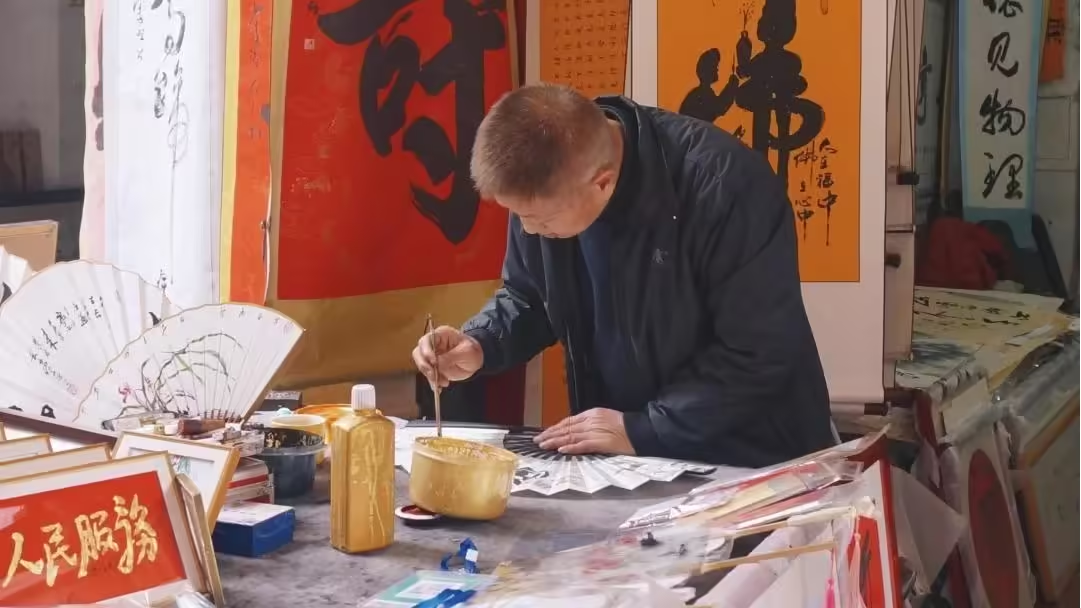To truly grasp the soul of a city and experience its most authentic essence, one must wander through its ancient streets and alleys. These old quarters, with their weathered buildings and cobblestone paths, carry the weight of history and the whispers of the past. In Xi’an, the ancient capital of China, these historic districts preserve the city’s rich cultural heritage and offer a glimpse into its thousand-year-old legacy.
One of the most famous historic areas in Xi’an is Shuyuanmen Street. This street is steeped in culture and history, surrounded by significant landmarks. To the west stands the Baoqing Temple Pagoda, a striking relic from the past. Within the street itself lies the Guanzhong Academy, the largest academic institution of the Ming Dynasty in Shaanxi. To the east, the Stele Forest and Wolong Temple offer further insights into the region’s scholarly and religious traditions. The street is lined with traditional-style shops selling a variety of handicrafts and cultural artifacts, creating a vibrant marketplace that is both a feast for the eyes and a testament to Xi’an’s rich artistic heritage. The entire cultural street is infused with a deep sense of history, where the scent of ink and the echoes of scholars seem to linger in the air.
While Shuyuanmen Street is drenched in scholarly ambiance, Xiangzimiao Street offers a more relaxed, tea-scented experience. Named after the Han Xiangzi Temple, a small but exquisite temple dedicated to Han Xiangzi, one of the Eight Immortals of Taoist legend, this street exudes an air of tranquility. The temple, though modest in size, is a spiritual haven that has stood the test of time for over a thousand years. The street is also home to numerous tea houses and art galleries, making it a cultural oasis in the heart of the city. Xiangzimiao Street is also known for housing one of Xi’an’s oldest bookstores, adding to its charm and intellectual allure.
No visit to Xi’an would be complete without a stroll through the Muslim Quarter, a vibrant and bustling district that is one of the city’s most iconic locations. This area is a must-see for visitors, not just for its famous food street lined with an array of delicious eateries but also for its rich cultural significance. The Muslim Quarter is a melting pot of Chinese and Islamic architecture, where traditional Chinese-style buildings are adorned with Islamic motifs, creating a unique and harmonious blend of cultures. As night falls, the street comes alive with bright lights and the sounds of lively crowds, as locals and tourists alike gather to enjoy the local delicacies and soak in the neighborhood’s festive atmosphere.
Another gem in Xi’an’s historic tapestry is Defu Alley, a street that combines the old-world charm of traditional Chinese architecture with the modern allure of Western-style coffee shops. This blend of East and West creates a unique atmosphere that has made Defu Alley a popular spot for both locals and visitors. In the past, sipping coffee here was a symbol of status and sophistication. Even today, strolling through Defu Alley, one can’t help but feel a sense of leisure and elegance. The ancient archways and quaint courtyards coexist with contemporary cafés, offering a serene retreat where one can enjoy a quiet moment amidst the hustle and bustle of the city.
These ancient streets of Xi’an are more than just a collection of old buildings; they are living museums, preserving the essence of a city that has witnessed the rise and fall of dynasties, the ebb and flow of cultures, and the enduring spirit of its people. As you walk through these historic districts, you are not just exploring a city—you are journeying through time, discovering the layers of history and culture that make Xi’an one of the most fascinating cities in the world.

